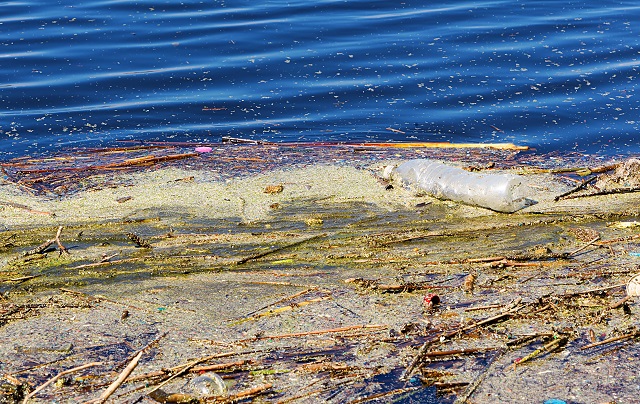
Rubbish floating on the ocean. Image Credit: Shutterstock
A new model created by the University of New South Wales researchers could be helpful in determining the countries to be blamed for causing the ocean garbage patch, a gyre of floating rubbish.
The Great Pacific Garbage Patch located between Hawaii and California affects the ecosystem in that region of the ocean, where plankton is outweighed by scattered plastic debris, and poses risk to birds, turtles, and fish that eat the debris.
According to UNSW mathematician, Gary Froyland, countries that are located remotely from a garbage patch could be a direct contributor to the patch. For instance, although the coastlines of Mozambique and Madagascar border the Indian Ocean, the ocean debris from these countries would probably reach the south Atlantic.
 This map shows the divided ocean into seven regions whose waters mix very little. The map could yield insights into the formation of giant ocean garbage patches, as well as ocean ecology. (Credit: Gary Froyland, Robyn M. Stuart, and Erik van Sebille/UNSW)
This map shows the divided ocean into seven regions whose waters mix very little. The map could yield insights into the formation of giant ocean garbage patches, as well as ocean ecology. (Credit: Gary Froyland, Robyn M. Stuart, and Erik van Sebille/UNSW)
Erik van Sebille, one of the researchers, said that the rate of at which the trash from one patch reaches the other could also be determined with the new model. The bigger question at the heart of the research is how well do the surface waters of the ocean mix.
Many different factors are involved in the formation of large ocean currents, including the forces generated by the spinning Earth, salinity gradients across the world, variations in water temperatures, and winds. Besides stirring ocean waters, these fast-moving currents also act as barriers that reduce surface water mixing between various ocean regions.
The researchers created the new model taking inspiration from the mathematical techniques of ergodic theory. The entire ocean is divided into seven regions by the researchers. At these regions, the water mixing is very low. The study results provide new insights into the ocean’s underlying structure.
The new analysis revealed that some regions of the Indian Ocean are actually closely associated with the south Pacific, whereas some regions of the Indian and Pacific Oceans really belong in the south Atlantic.
The new model is described in an article featured in Chaos, a journal from AIP Publishing.